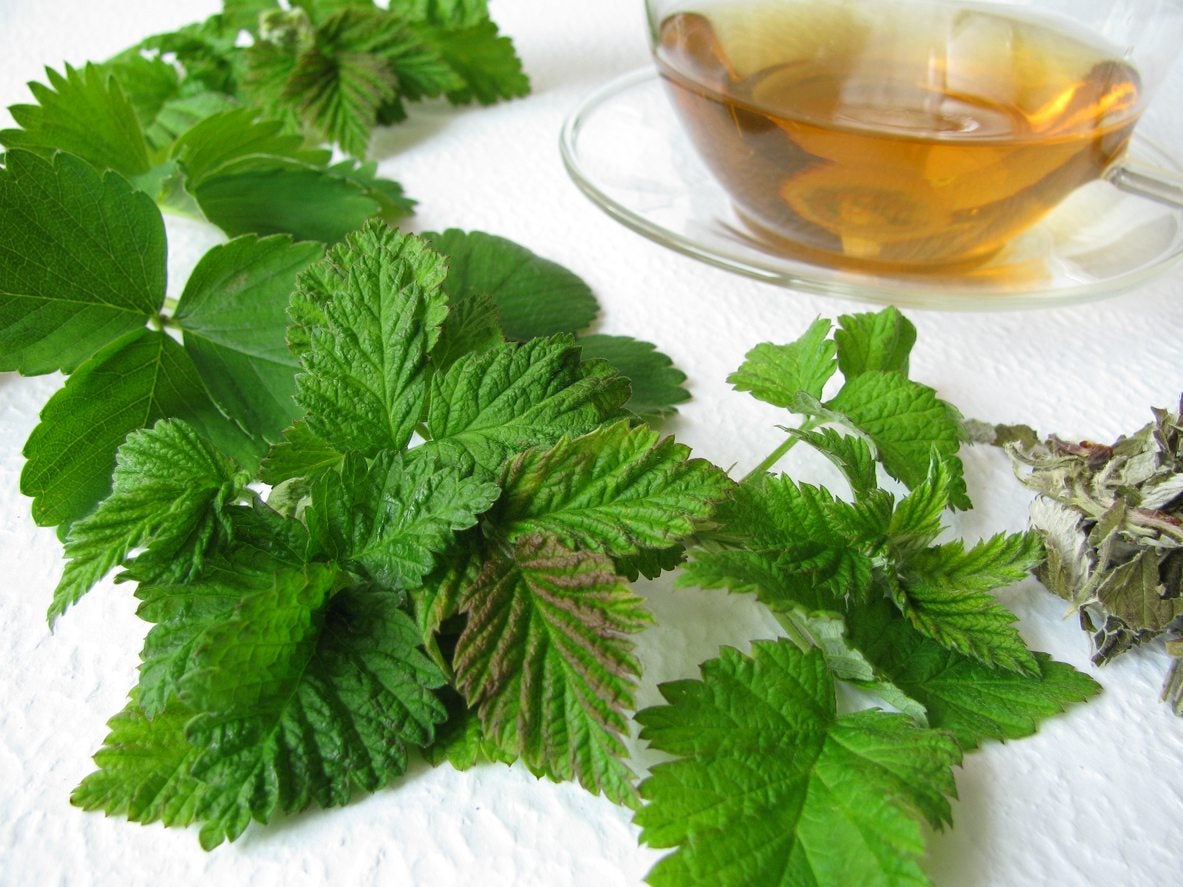
Many of us grow raspberries for the delicious fruit, but did you know that raspberry plants have many other uses? For instance, the leaves are often used to make herbal raspberry leaf tea. Both the fruit and leaves of red raspberry have several herbal uses that date back centuries. Read on to find out how to harvest raspberry leaf for tea and about other red raspberry herbal uses.
Red Raspberry Herbal Use
Raspberries are suited to USDA zones 2 through 7. They are perennials that grow to their full height in their first year and then fruit during the second. While most of us know raspberries for their use in preserves, baking, and eating fresh, Native American people used the leaves to make tea to treat diarrhea. Raspberry tea has long been used to treat menstrual symptoms and ease childbirth. Aboriginal tribes of Australia used a raspberry decoction to treat morning sickness, menstrual cramping, and the flu. The leaves are rich in potassium, iron, magnesium, and b-vitamins, all good for female reproductive health. While raspberry tea is good for those with menstrual ailments, it is also just plain good. It tastes much like a mild green tea and can be used alone or combined with other herbs. Raspberry leaves and roots have also been used to heal oral sores, treat sore throats, and even burns. If you have raspberry plants in the backyard, I’m sure you’re ready to start harvesting raspberry leaves. The question is "When to pick raspberry leaves for tea?"
When and How to Harvest Raspberry Leaves
There’s no trick to harvesting red raspberry leaves for tea, it just takes a little patience. Harvesting red raspberry leaves for herbal use should be done before the plant blooms in midmorning, once the dew has evaporated and while the leaves’ essential oils and flavor are at their peak. Be sure to wear some protection from the thorns, such as long sleeves and gloves. Leaves can be harvested any time of the year or just towards the end of the season. Choose young, vibrantly green leaves and snip them from the cane. Wash the leaves and pat them dry. Lay them out on a screen and allow them to air dry or put them in a dehydrator. If you have a thermostat on your dehydrator, dry the leaves at 115 to 135 degrees F. (46-57 C.). If not, set the dehydrator to low or medium. The leaves are ready when they are crisp but still green. Store the dried raspberry leaves in glass jars in a cool, dry area out of the sun. When ready to make tea, crush the leaves by hand. Use 1 teaspoon (5 ml.) or so of crushed leaves per 8 ounces (235 ml.) of boiling water. Allow the tea to steep for five minutes and then drink up.
Sign up for the Gardening Know How newsletter today and receive a free copy of our e-book "How to Grow Delicious Tomatoes".

Amy Grant has been gardening for 30 years and writing for 15. A professional chef and caterer, Amy's area of expertise is culinary gardening.
